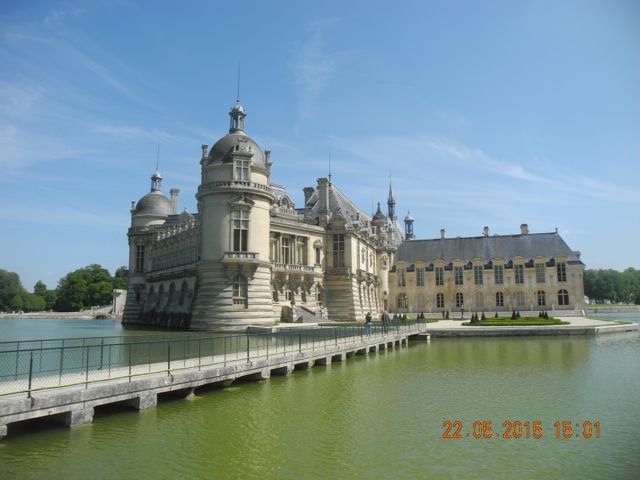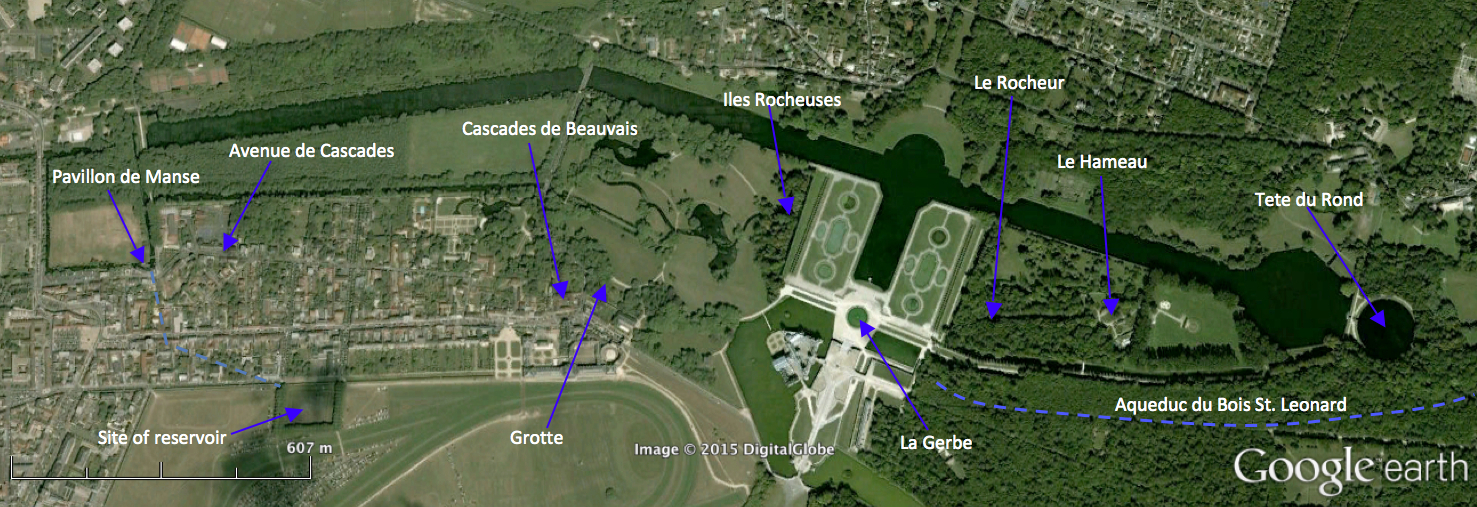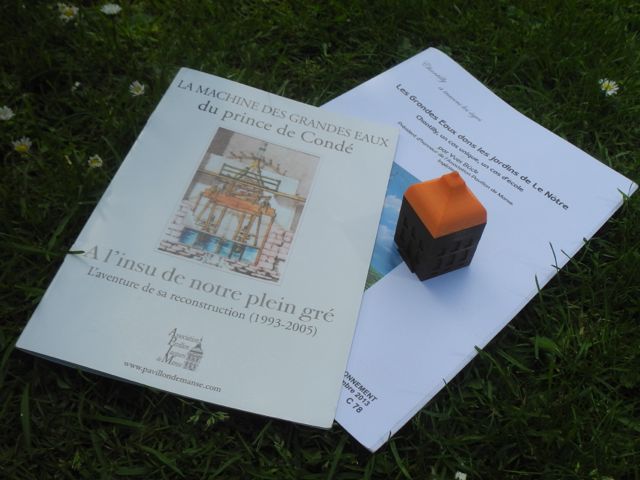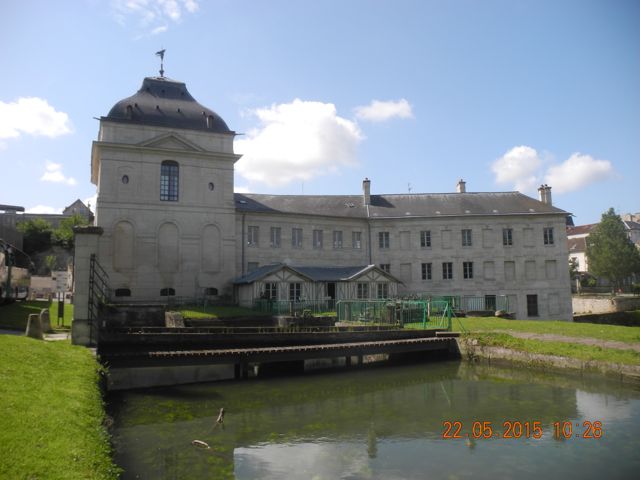
The
Pavillon de Manse from the north with later additions to the right.
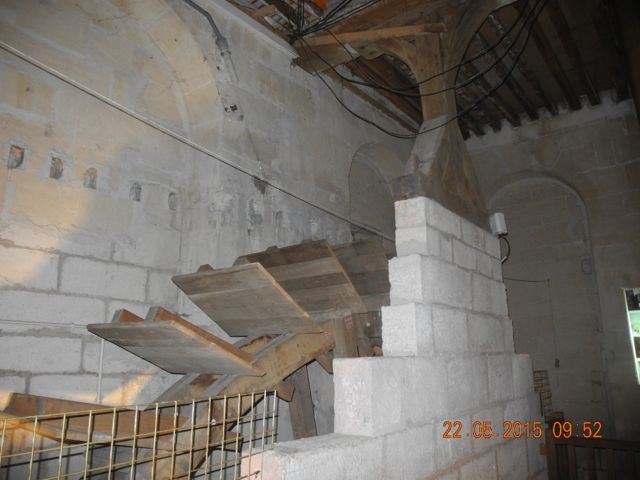
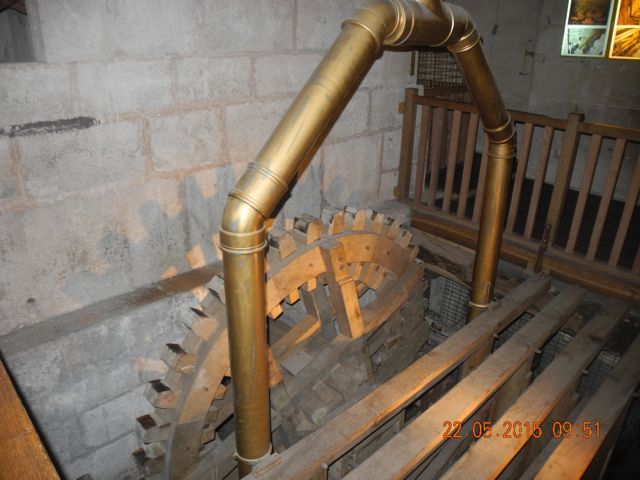
The reconstructed pumping mechanism: the water wheel and the pit wheel with the pipes up to the tank
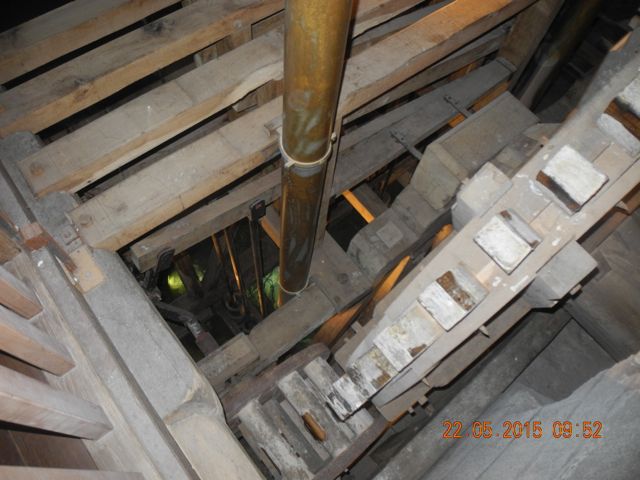
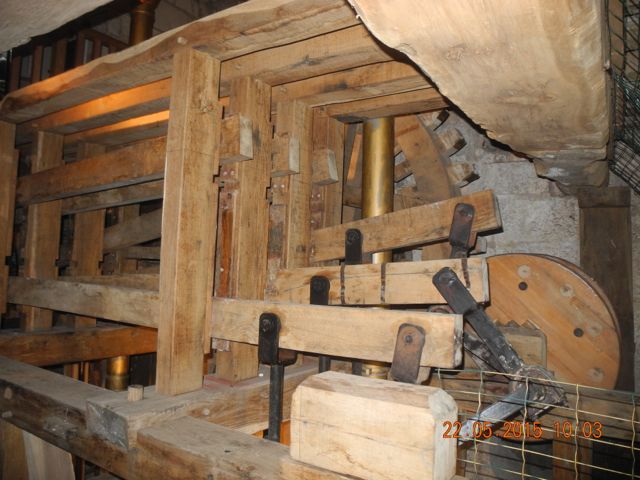
Looking down to the pumps and on the next floor down the rocker arms operating the pumps.
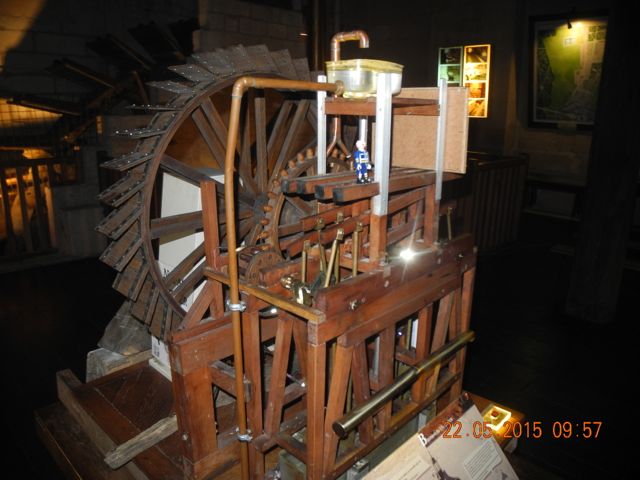
A model of the whole thing (cf. Modave ) - not sure about the Lego figure.
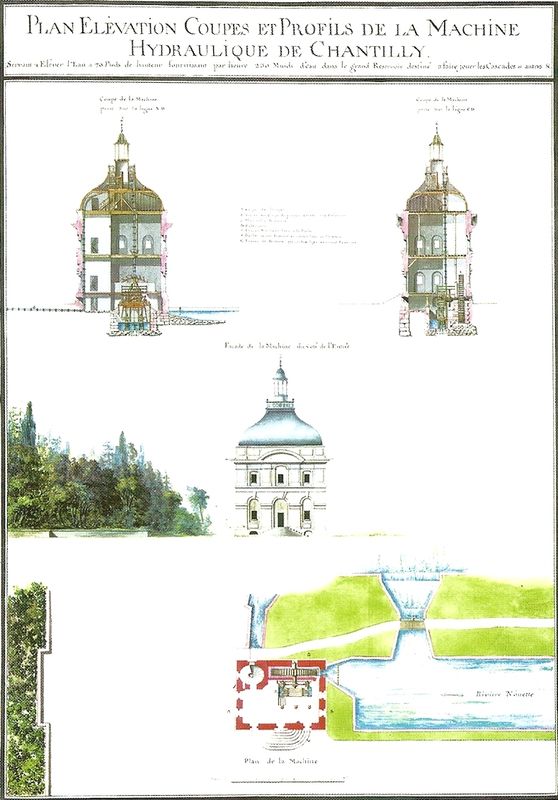
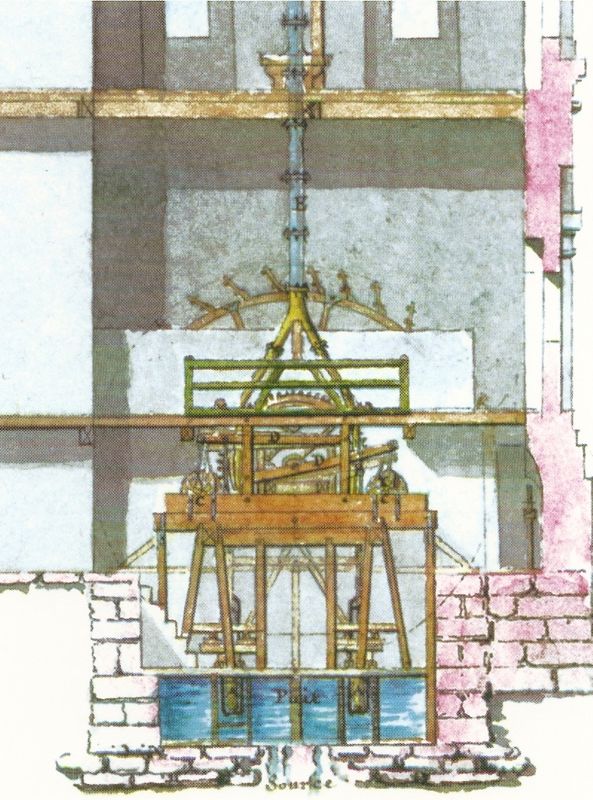
Drawing of the
Pavillon with detail of the pumps from
Album du Compte du Nord 1784
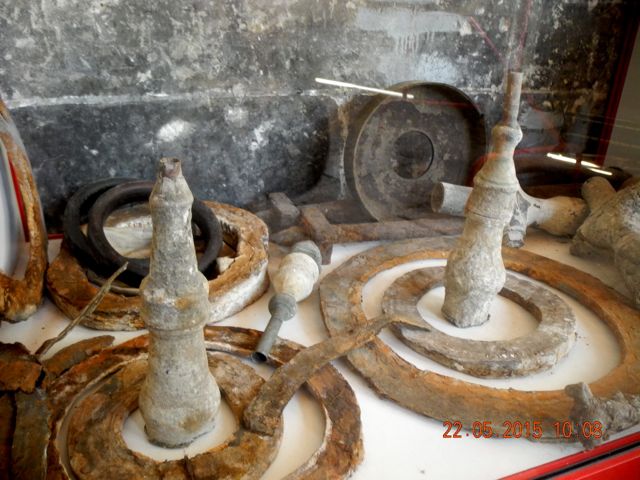
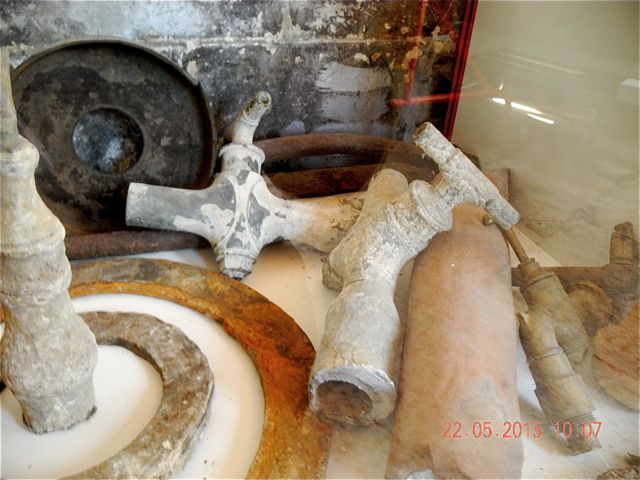
A small display case of related finds, sadly unlabeled but containing
fountain nozzles, look at that reduction, and some splendidly hefty
taps.
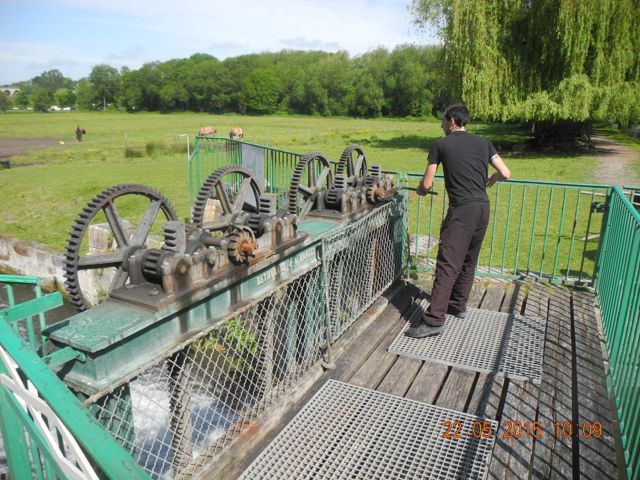
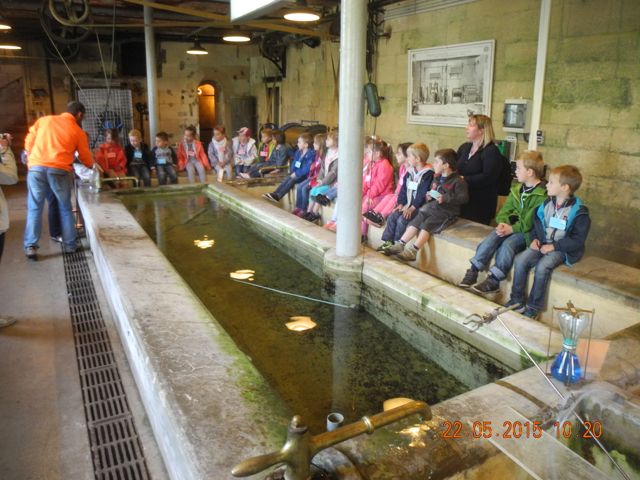
Our host lets rip with the water supply to the nineteenth-century pumps
and a group of children fathom the mysteries of the laundry
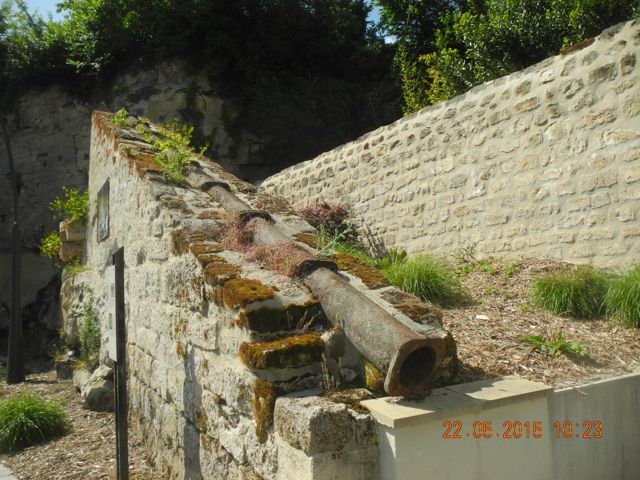
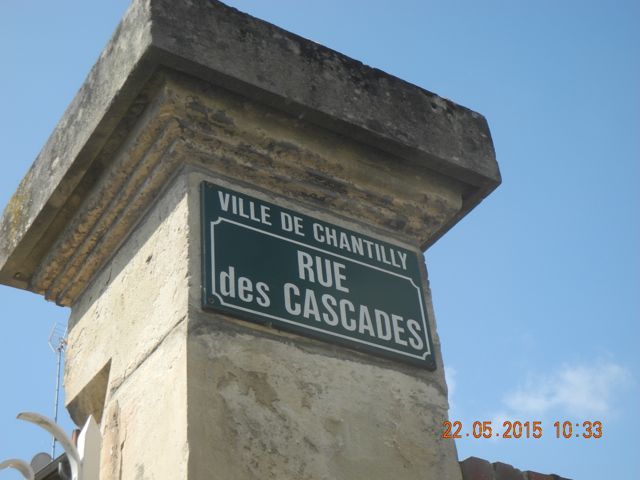
In the car park to the south are preserved an original section of iron
pipes en route to the reservoir which would have supplied the cascades
now marked only by street signs.
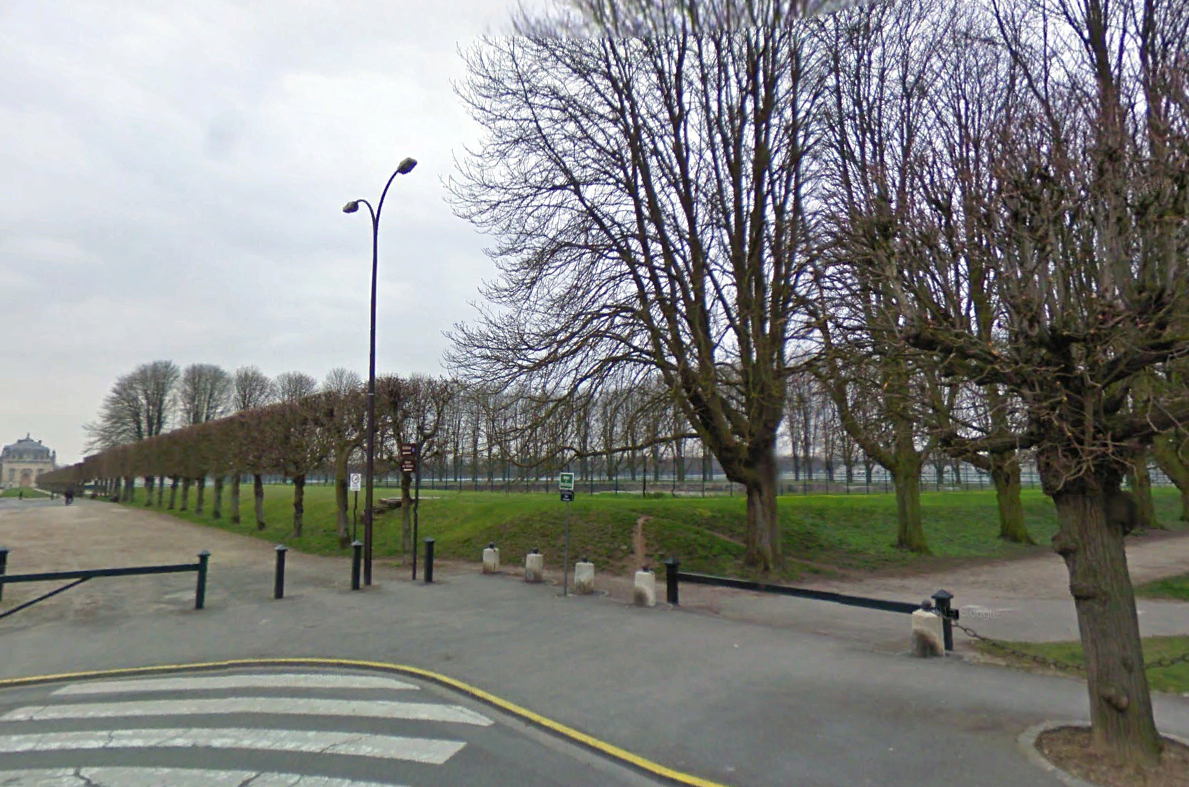
The site of the reservoir at Pelouse looking south east marked by
earthwork banks, not my photo but filched from Google Street view!
Despite having medieval origins the
features that most people come to see today are parts of the gardens
laid out by André Le Nôtre primarily in the 1660s and 1670s. These were
severely geometric but enlivened by the play of water and the presence
of decorative planting, flamboyantly dressed crowds and boats bobbing
around. The fact that the plants, people and boats are largely
absent contributes much to the present rather austere landscape. Ultimately
most of the water within the park is derived from the small river
known as the Nonette but this was managed in increasingly sophisticated
ways as channels criss-crossed the gardens. An early part of
the system for feeding water to the castle was the Aqueduc du Bois
Saint-Leonard constructed in1622 and bringing a flow of water from
sources 2 kilometres upstream.
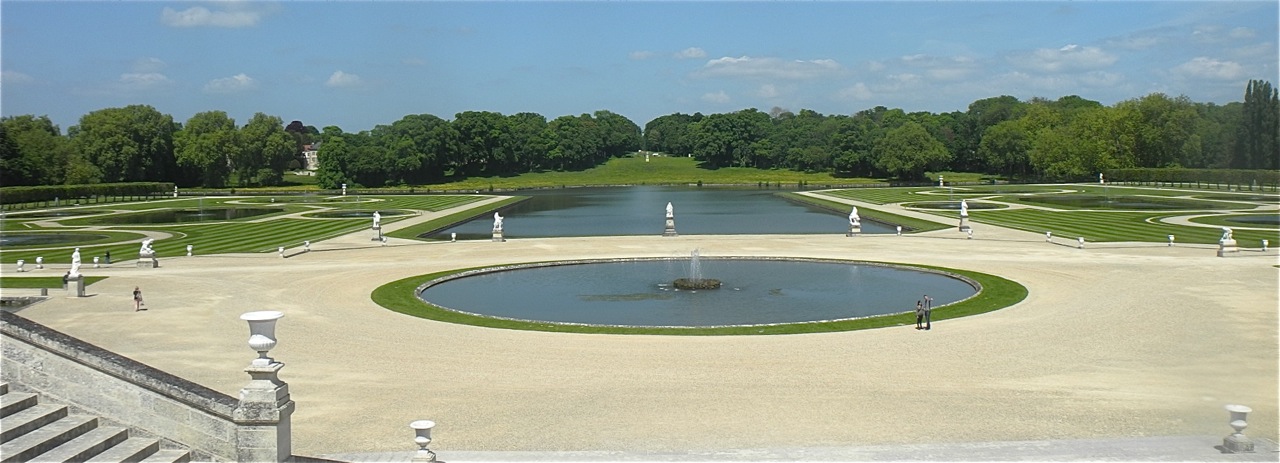
Looking north along the main axis of the garden to the east of the
chateau over
La Gerbe along
La Manche and across the
Grand Canal, the
people give the scale.
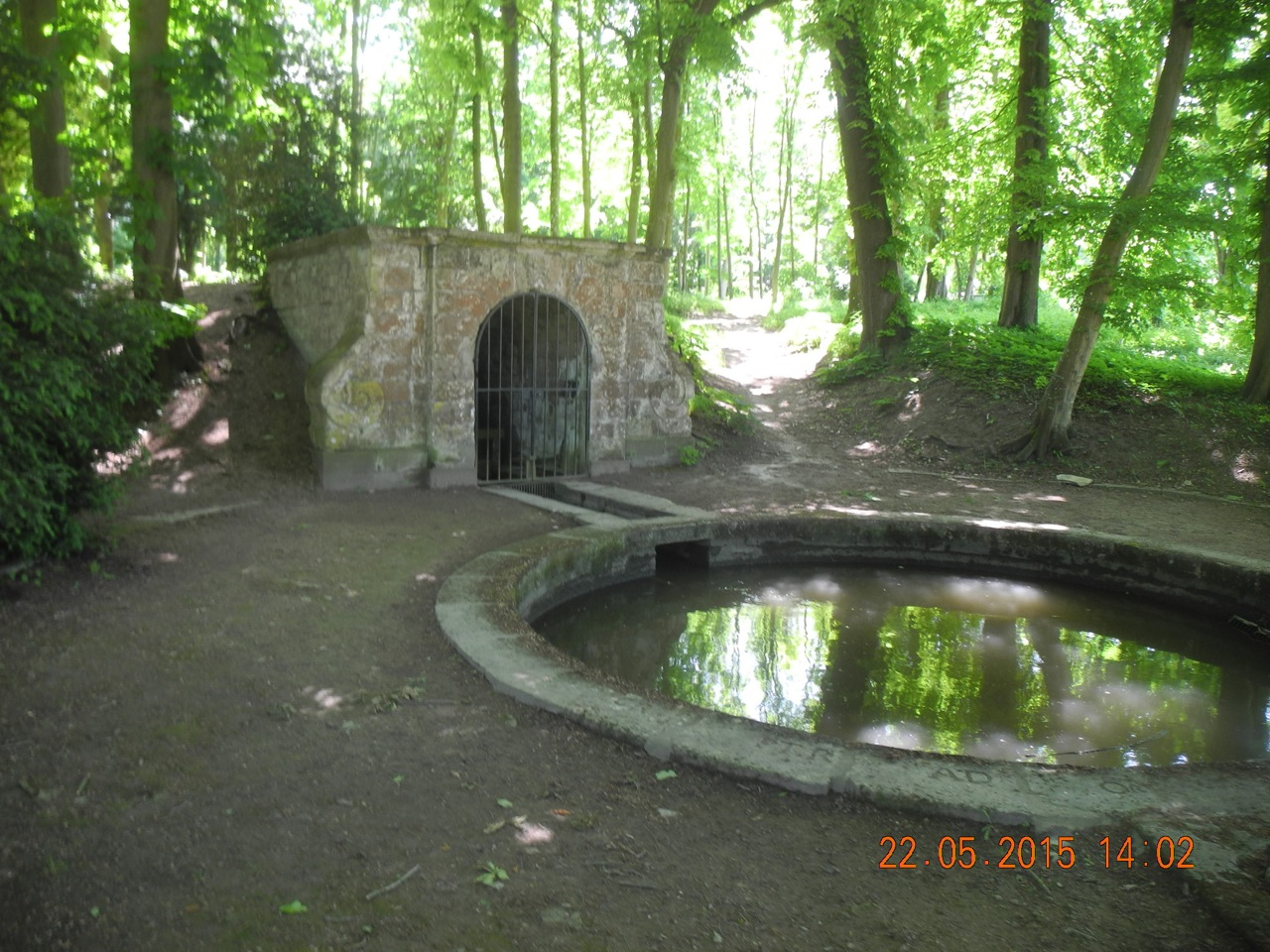
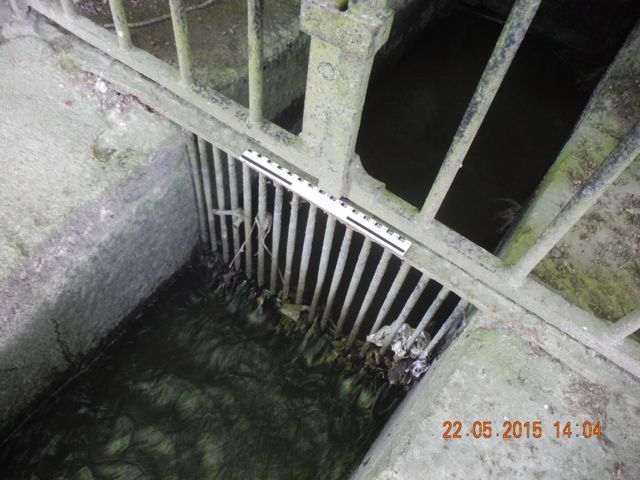
Water from the
Aqueduc du Bois Saint-Leonard emerges here at a feature known as
Le Regard, a small conduit house and circular pool which appears to be an 18th. century addition. View from north and detail of grid
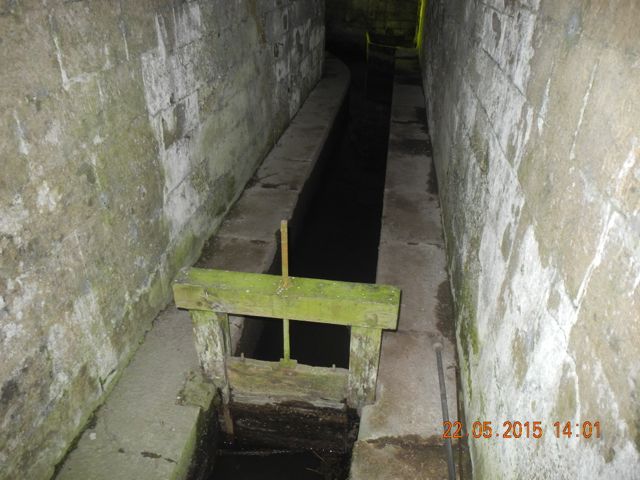
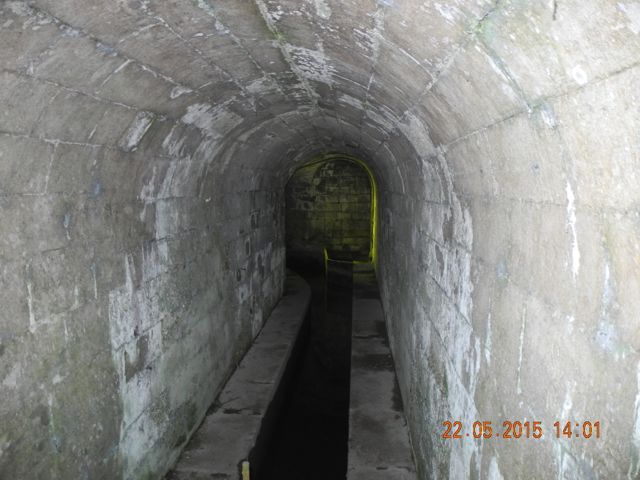 Aqueduc du Bois Saint-Leonard
Aqueduc du Bois Saint-Leonard, with the conduit house, a sluice gate and the conduit as it bends round the the east.
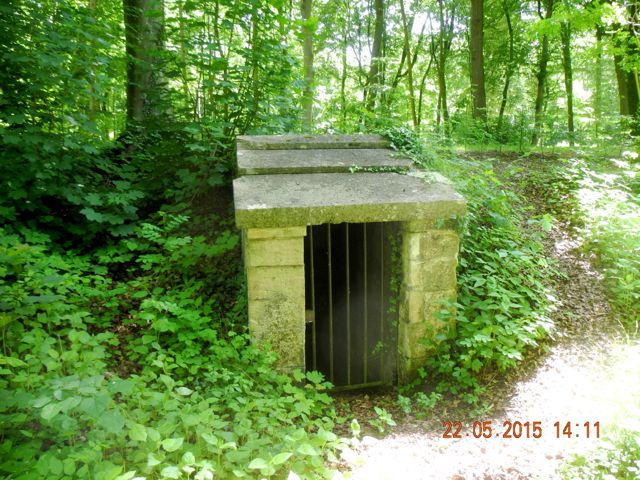
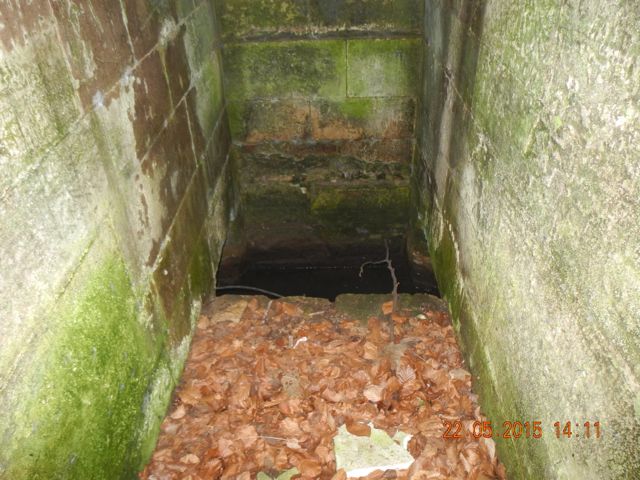
An intermediate point on the
Aqueduc du Bois Saint-Leonard, a small chamber giving access to the conduit views looking north.
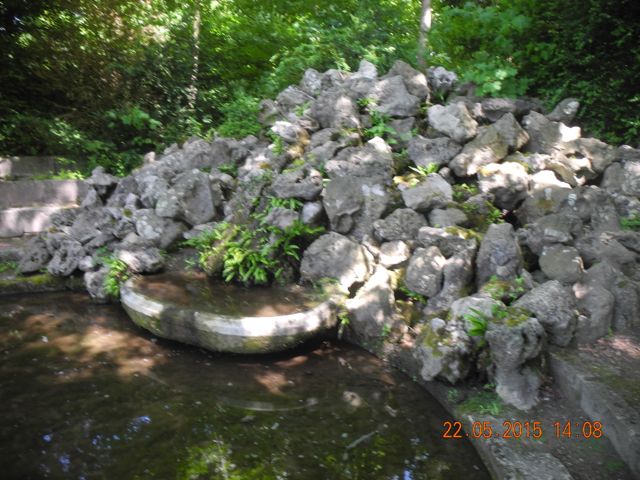
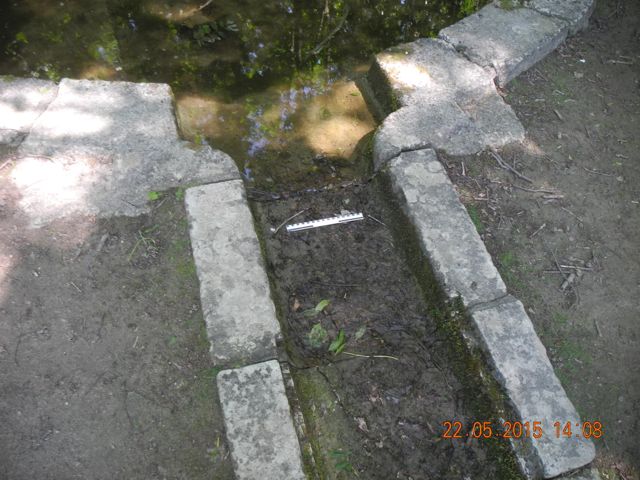
Fountain at the head of the
Bassin du Prince, view looking north east
and detail of channel emptying into the
Bassin looking east probably
from the 1730s.
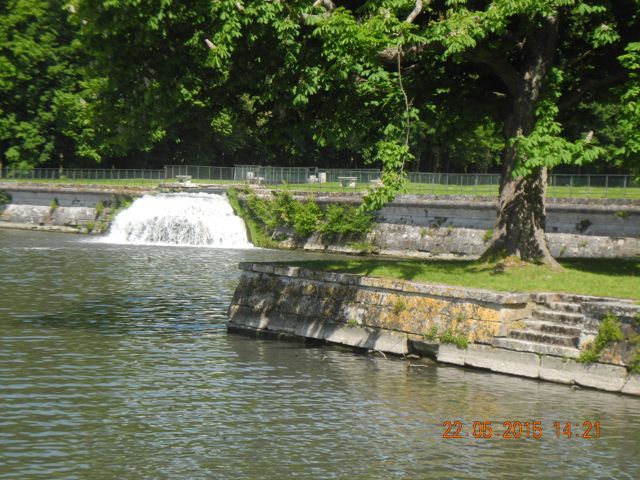
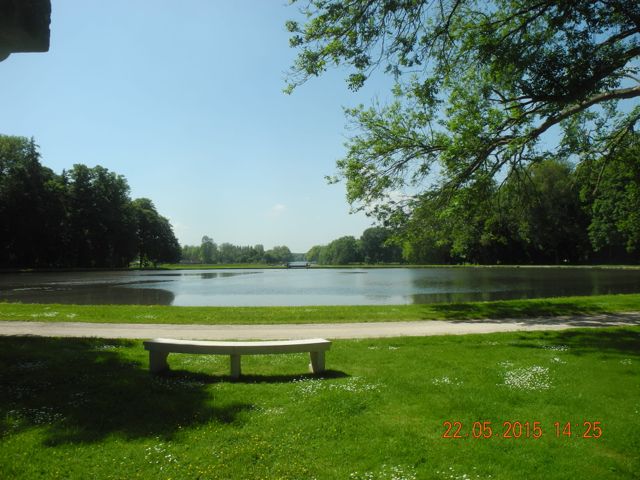
The
Grande Cascade and corner of the
Hexagone looking north east and
the view looking west across the
Tete du Rond and out along the
Grand
Canal, all part of Le Nôtre's original scheme.
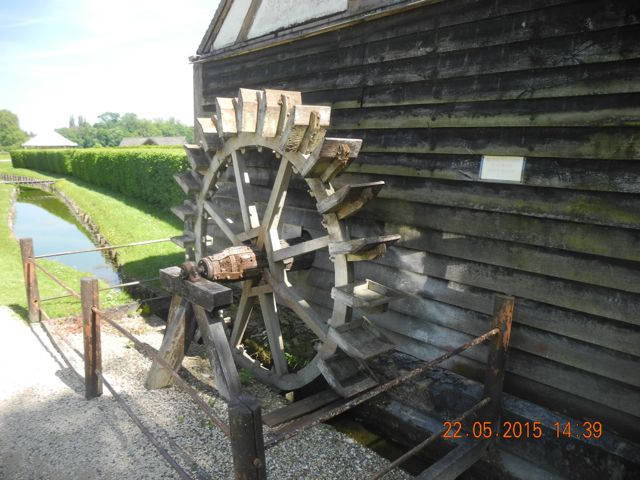
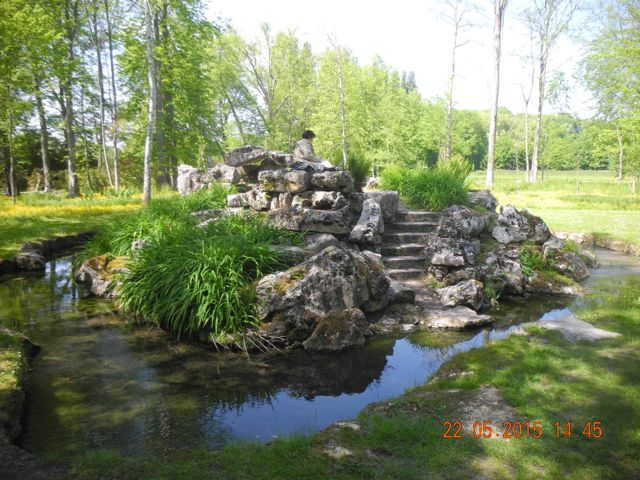
Reconstructed water wheel on the side of the mill in the model village or
Hameau, looking east and
Le Rocher from the south, a feature of the
Jardin Anglo-Chinois both 1772 -5
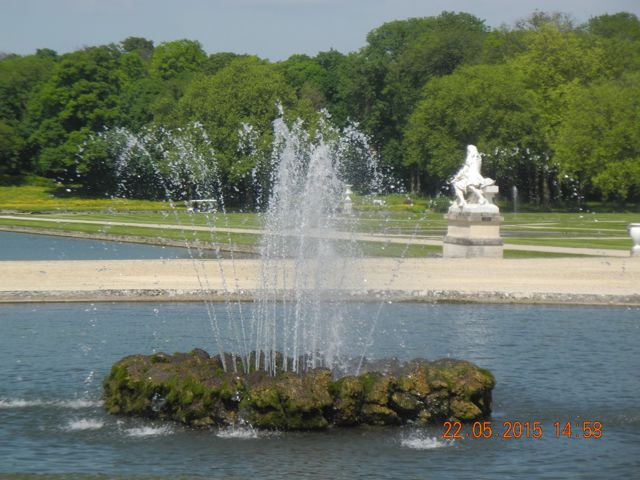
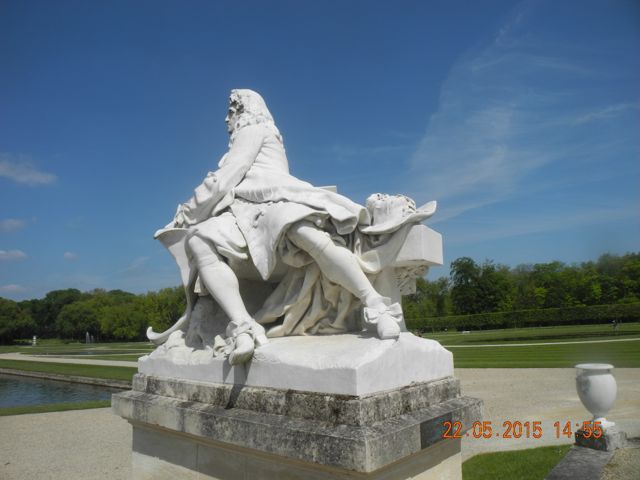
Back to the classical garden, a close up of
La Gerbe looking north east with a close up of the late nineteenth-century statue of
Le Nôtre.
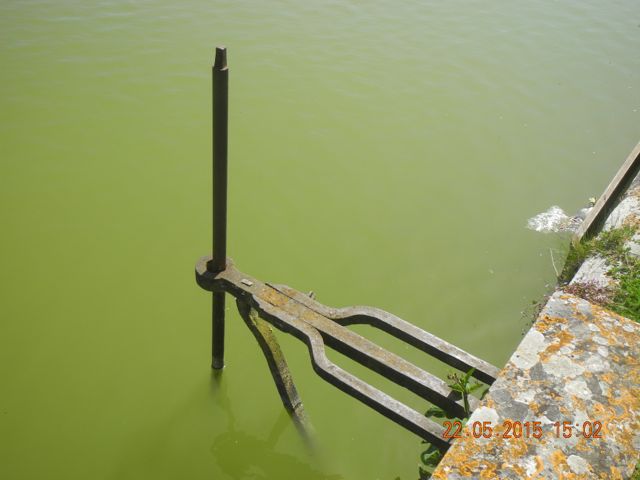
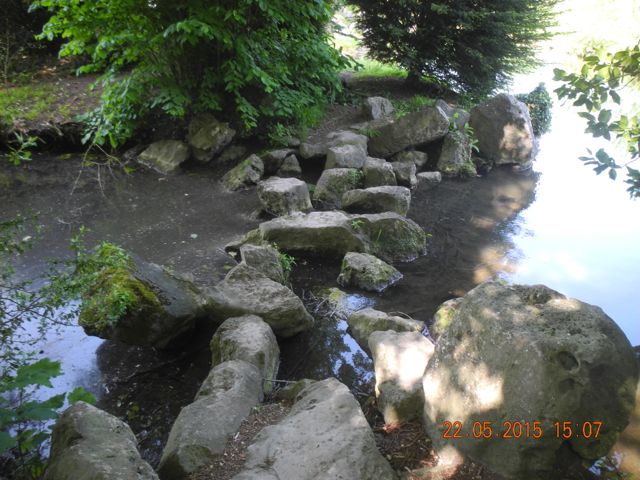
Detail of sluice mechanism on the west side of the moat and stepping stones over to
Les Iles Rocheuses looking north probably nineteenth century.
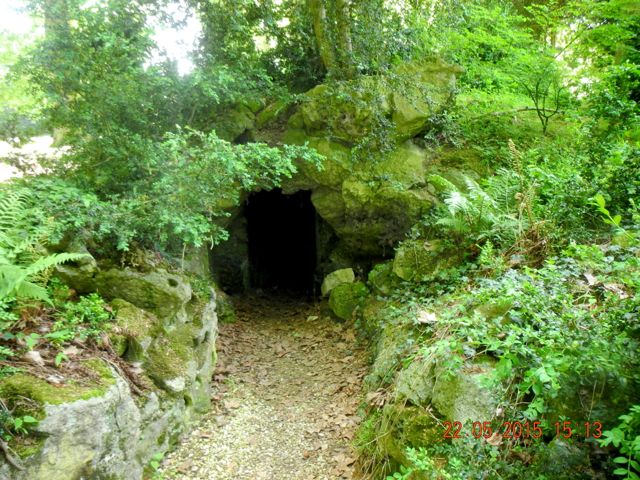
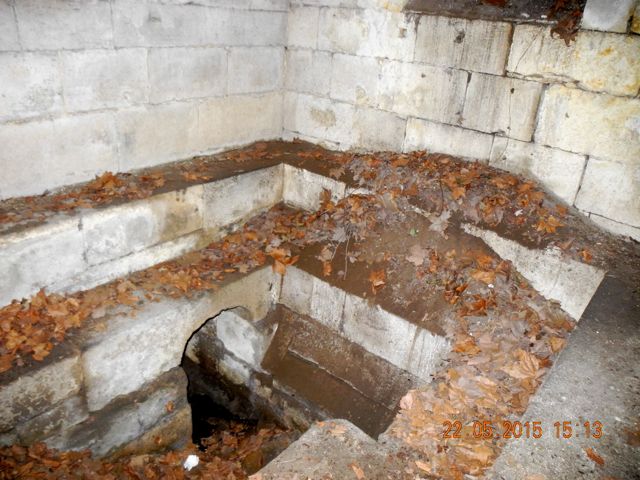
Grotto to the east of the Cascades de Beauvoir, entrance looking south
and steps and water channel at west end, doesn't appear to be earlier
that the nineteenth century.
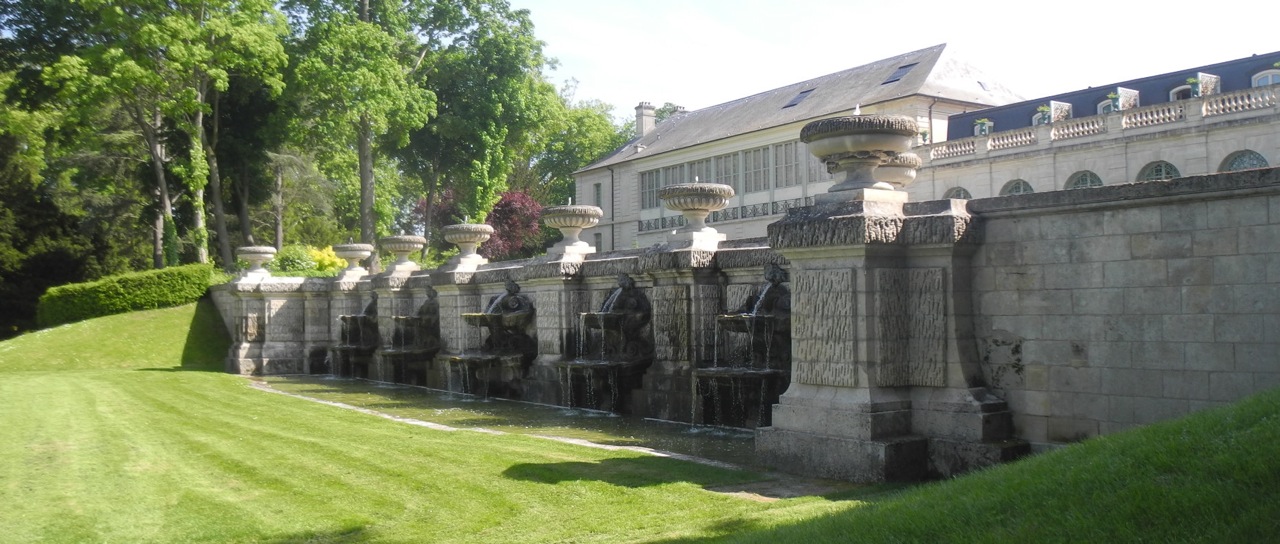 Cascades de Beauvais
Cascades de Beauvais dating from the 1680s, looking south.
During the course of a day we were able to examine many significant elements of the park although there is more to do. The Potager de Prince,
today a separate establishment but containing some fountains from the
western part of the garden appeared to be closed and there simply
wasn't time to head south towards the Parc de Sylvie. Even so a very productive visit plus a chance to pick up some useful publications namely:
La machines des Grandes Eaux du
Prince de Conde a l'insu de notre plein gre, L'aventure de sa
reconstruction. Association Pavillon Jacques de Manse
Les Grands Eaux dans les Jardins de le Nôtre: Chantilly, un cas unique, un cas d'ecole by Yves Buck. Association Pavillon Jacques de Manse
Les Fontaines et Grandes Eaux de Chantilly. Association Pavillon Jacques de Mans
and purchased before we left, particularly useful:
André Le Nôtre and the Gardens at Chantilly in the 17th.
and 18th. Centuries by Nicole Garnier-Pelle, Somogy Art Publishers,
Paris 2013
LINKS: Pavillon de Manse, Chateau de Chantilly, Potager des Princes
